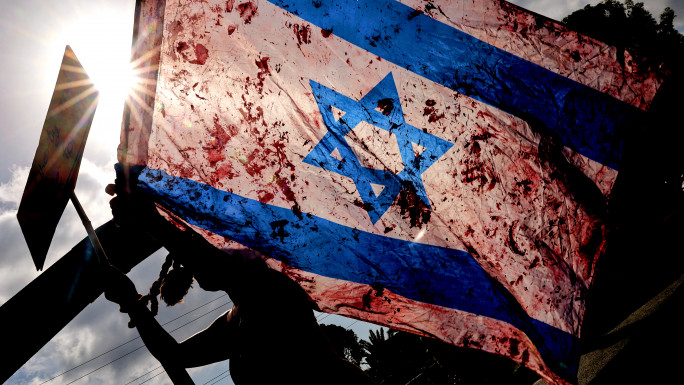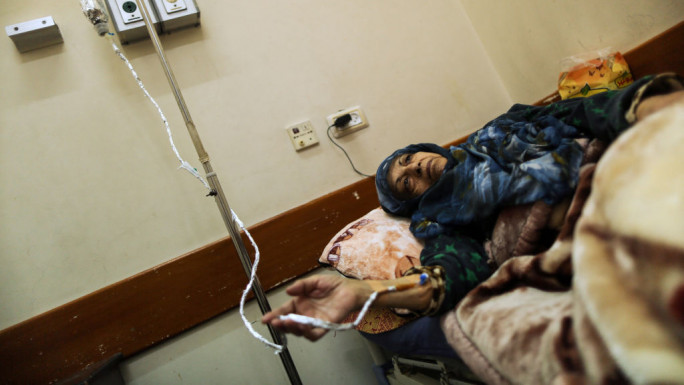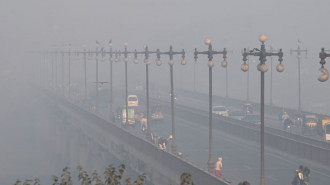Yemen's Houthi anti-aircraft fire 'leading cause' of Sanaa casualties
Anti-aircraft weapons fired by the Houthi movement are the leading cause of civilian casualties in Yemen's capital Sanaa, Amnesty International has said.
The human rights organisation conducted investigations in several hospitals in Sanaa, and found that the use of anti-aircraft fire, and specifically a type which detonates on impact, whatever that surface may be, was leading to the highest number of injuries and deaths.
Amnesty also pointed the finger at the Saudi-led coalition airstrikes, which have targeted Houthi positions in Sanaa and elsewhere, as well as positions controlled by Yemen's former president Ali Abdullah Saleh, since March 26. The strikes have often hit military targets that are in residential areas, or have hit arms dumps that have then triggered further explosions, leading to civilian deaths and injuries.
“Sanaa's residents are caught in a deadly crossfire between the Saudi Arabian-led coalition airstrikes and anti-aircraft fire from the Houthi armed group,” said Lama Fakih, Amnesty's Senior Crisis Advisor. “Both sides have failed to take the necessary precautions to protect civilian lives in violation of the laws of war. Instead they have carried out attacks that have had devastating consequences for the civilian population.”
Staff at major hospitals in Sanaa, including al-Thawra, the German-Saudi and al-Muayyad Modern, told Amnesty that the “vast majority” of war wounded patients had been injured by anti-aircraft fire, and the organisation was able to meet the family of a 13-year-old, Karim Farhan, who was killed by anti-aircraft fire on April 27, among others.
The use of anti-aircraft fire by the Houthis has been largely ineffectual so far, with only one coalition plane, a Moroccan fighter jet, confirmed to have crashed in the campaign thus far, and it remaining unclear whether the crash was a result of anti-aircraft fire, engine malfunction, or pilot error.
Anti-Houthi fighters step up attacks
Anti-Houthi fighters in Yemen, which label themselves the 'Popular Resistance', have stepped up their attacks in the past few days in a number of provinces in northern Yemen, as Saudi-led coalition airstrikes also continue.
The declaration of a 'Resistance Council' in Ibb, which lies between Sanaa and Taiz, is seen as a prelude to the expansion of the battles against the Houthi-Saleh forces in the northern provinces.
There have been attacks in Ibb targeting Houthi-Sakeh convoys and reinforcements in Taiz, where the fighting has been fierce.
'Resistance' operations are concentrated primarily in Ibb, Hodeidah, and the suburbs of Sanaa, where surprised attacks have been mounted against checkpoints and convoys. This is in addition to Taiz, Marib and al-Jawf, the main fronts in the northern provinces. The fighting is likely to escalate in the coming period, amid leaked reports about the arrival of armed forces following training in the border regions with Saudi Arabia.





 Follow the Middle East's top stories in English at The New Arab on Google News
Follow the Middle East's top stories in English at The New Arab on Google News

![Ajyal Film Festival [Getty]](/sites/default/files/styles/image_330x185/public/2185207539.jpeg?h=a5f2f23a&itok=kvgfYE_p)
![There is no accurate data on rental units in Egypt for the lease rights have been extended to next of kin. But it is believed they account for nearly 1.800.000 units, almost 450.000 of which are shut down and unoccupied. [Getty]](/sites/default/files/styles/image_330x185/public/521189618.jpeg?h=f0ab467d&itok=MUqSRrQi)